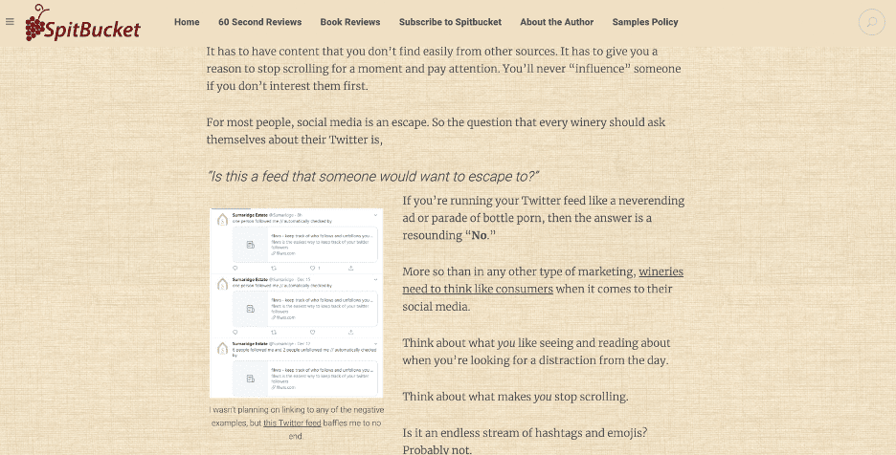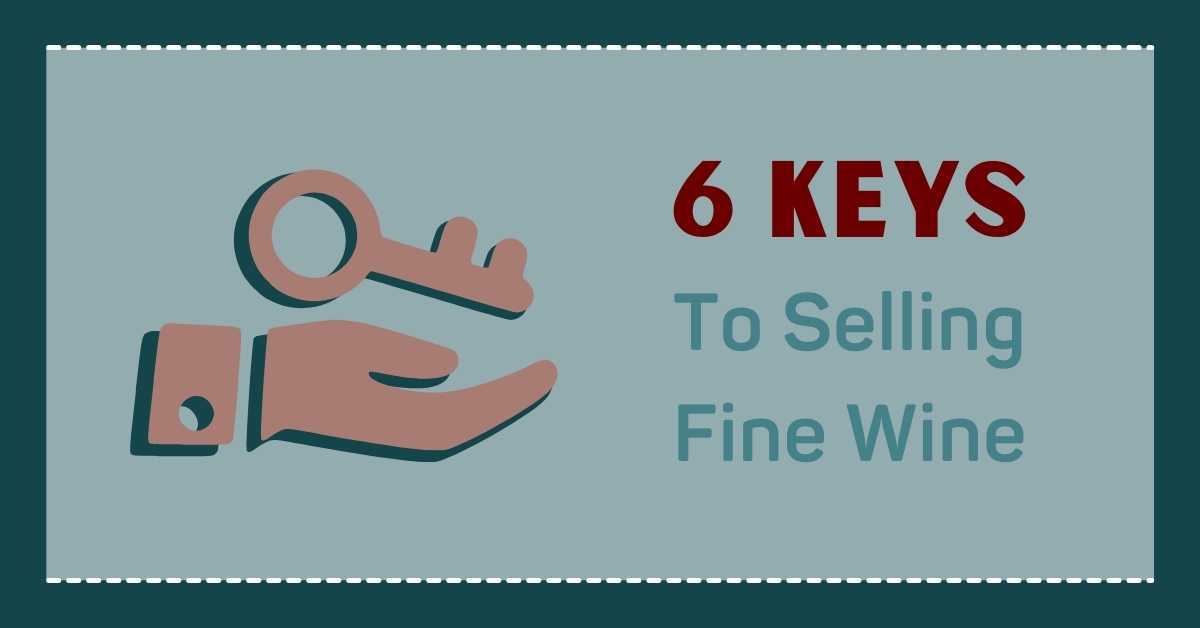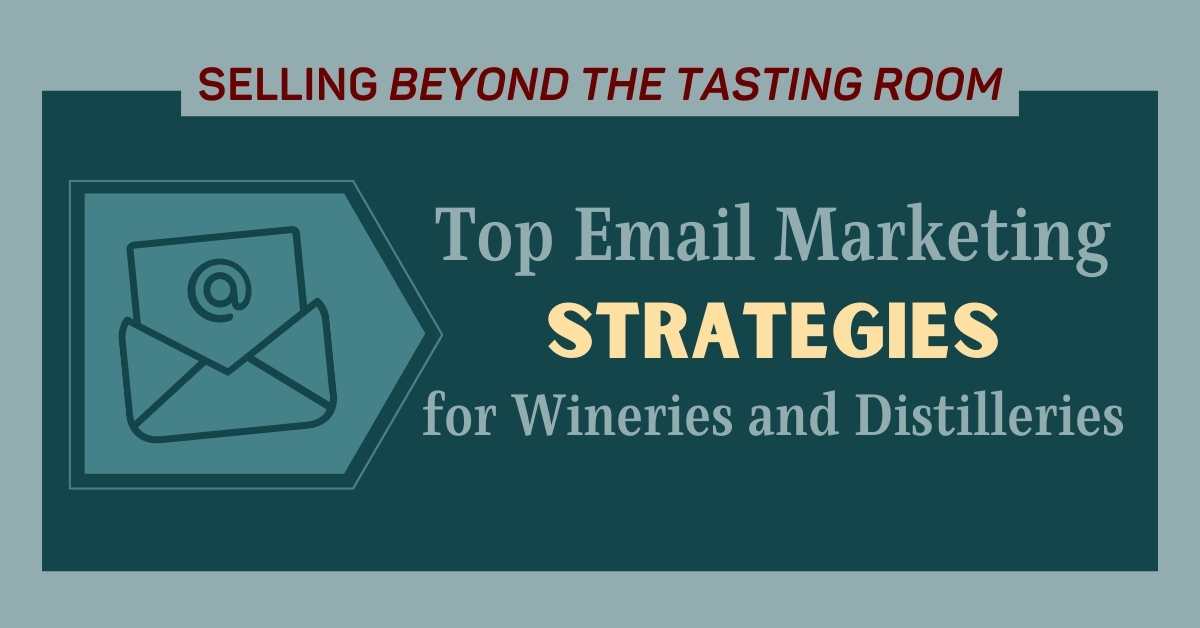6 Keys on How to Sell Fine Wine
Fine wine, luxury portfolio, high image wines – whatever you call it, I'm sure you want to sell more of it. When it comes to selling higher image...
9 min read
 Dan Salisbury
:
8/12/22 2:33 PM
Dan Salisbury
:
8/12/22 2:33 PM
Table of Contents
PART 1: The Foundations for Success on Social Media
a. Remember that Social Media Platforms Weren't Originally Created for Sales
Has a larger body of conflicting advice propagated the globe than the advent of “social media for business?” Do you know how to use social media channels to promote and grow a family owned winery or craft distillery?
While the following includes practical suggestions for growth, I’ve taken time to front-end load this article with mindset and approach work. Wineries and distilleries that get this first part right will be well-equipped to make a meaningful and authentic impact in a way that only a true original can.
Learning to sell more wine online using social media begins with realistic expectations.
While social feeds are a very necessary way to stay top of mind with your customers, their impact on your business at any given moment pales in comparison to the potential offered by targeted campaigns optimized for achieving your goals. It would be foolish not to utilize such a cost effective (free) way to reach your fans, but it’s not worth losing sleep over every post, story, livestream, and reel.
It’s true that your feeds operate somewhat like the window in a shopping mall; customers peer in to see who you are and what you’re all about. You should make it easy for them to click through to your web-store and other key areas of your website, but – beyond that – don’t make it weird by trying to upsell your fans at every turn.
Let’s just get this out of the way. Before interruption marketing killed the vibe, we were all having a good time on these things. Instagram, Twitter, Facebook, MySpace, heck – Xanga – were all essentially a moody little party cove where millennials went to share every adolescent thought that popped into our heads. Our parents joined, people started sharing food pics, checking into restaurants, arguing about Obama, and next thing you know everyone’s freaked out that the running shoes they just bought are all over their feeds.
Reductionist? Admittedly. Albeit a narrow POV – one man’s account of the Wild West shrinking into a billboard-riddled network of interstates – this is a feeble attempt to illustrate the forces driving younger generations to pack up and move to new platforms like Snapchat, TikTok, and whatever’s next (now that we’ve all caught on).
If context is key to success with paid ads, it’s absolutely crucial for all the social media managers out there playing Edward iPhone Hands for a living. People use these platforms to connect with friends (possibly family) and to be entertained. That’s it.
As wine writer, Amber LeBeau, reminds us in her blog, Spitbucket, “for most people, social media is an escape.” While I can’t improve upon her post, What makes a winery Twitter account worth following?, I can vehemently endorse her prompt. “Is this a feed that someone would want to escape to?”
 Check it out. There's more wisdom in this screenshot than any microphone ever suffered from a keynote speaker.
Check it out. There's more wisdom in this screenshot than any microphone ever suffered from a keynote speaker.
A little self-awareness goes a long way. Your business needn’t infiltrate people’s feeds under the guise of providing them with some no-strings-attached comedy routine. No. People’s BS-detectors have become so finely attenuated, you’ll look like Dad turning his hat backwards at the party, sidling up to your middle school friends to ask, “what it do, homeskillet?”
Remember you’re not curating a museum exhibit here. You’re not painting the next Rembrandt. A post, story, reel, or livestream is, in the grand scheme of things, a blip on someone’s radar intended to share something about yourself, your day, and ultimately get a reaction from your fans. Aside from the obvious – namely, posting your political or religious views off-the-cuff like it’s 2016 Thanksgiving dinner – just about anything is fair game to go back and delete with no repercussions if you decide you don’t like it later. Bask in the impermanence of it all!
From a bird’s eye view, think of the collection of posts that make up your business page more like a photo album and less like a serious self-portrait. You’ll breathe easier and free up more of your time and energy to focus exclusively on the most meaningful activities for growing your business.
As for being yourself, well . . . that’s a bit more complicated. This is inherently a conversation about brand identity as it relates to the people managing your social feeds.
Businesses are not usually a one person show; they’re collections of distinct individuals striving to fulfill the same purpose. If the designated person sharing behind-the-scenes footage isn’t aligned with the unique voice, culture, and values that your brand promises, your customers will find themselves interfacing with a Picasso. Customers don’t like unpredictability when it comes to the businesses they rely on to solve their problems and help them achieve their goals.
Yet authentic expression is unpredictable. Humans share feelings. Should businesses? Convictions, beliefs, values – those are easy enough. But feelings?
If you really want your marketing to hit home on social media, you have to be vulnerable. *Cue the sound of a thousand Bentleys rolling up their windows.*
Too many corporations use social like it’s their audition to be the next editor of SkyMall, slapping the same cheesy filter or logo onto stock photos and stripping their messaging of any real personality. Suddenly their social feeds begin to look like a PR firm under interrogation – far from the conversation social media was intended to facilitate.
I’m not necessarily advocating for posting willy-nilly, using whatever filter hits the spot that day or giving your social media guy the green light to go on a rant about Transformers: Dark of the Moon whenever he feels like it. Your feeds should maintain a consistent look and feel. Even if your brand aesthetic is characterized by disorder – punk, DIY, avant-garde, etc. – keeping your branding cohesive across all media helps build recognition, grow equity, and ultimately validate the consumers placing their trust in your wine or spirits brand to deliver on its promises.
There’s no one-size-fits-all approach to social media marketing, however. It is a good idea to use the same filter on all your posts if you’re that kind of brand. We don’t need any more unilateral advice or stuffy formulas. The best social media marketing achieves real, creative, human connection, and that looks different for everyone.
Take a glance at Apple’s Instagram feed. Notice how there aren’t apples watermarking every photo or iPhone 13s spilling out of everyone’s pockets. There’s no cornucopia of macbooks posed neatly in coffee shops; no graphic designers hunched over their iPads or Apple Watches shaking hands in the breakroom. Apple understands that Instagram is about beauty, fun, and human connection.
Don’t listen to the myth that your business needs to brand the snot out of everything on your feeds in order to succeed. Since roughly 99% of the wine industry is obsessed with “bottle porn” (you can thank Amber LeBeau again for that one), your brand has all the more opportunity to stand out by returning the focus to your fans and imbuing your online presence with personhood. If your posts aren’t relatable or don’t reflect the experiences your customers wish they were having, no amount of chic graphic design and imagery can salvage the relationship.
If your social media manager isn’t naturally curious, interested in, and actively interacting with the latest in social media as a user, they likely have no place keeping your business towards the front of the pack.
Reading articles on new features and trends isn’t enough to maintain real social media literacy or posting proficiency. I say this with confidence because I ran multiple social feeds full time for three years, and I barely touched my own feeds the whole time. I’ll be the first to admit that someone young and thirsty could have built something much more inspired than my endless stream of dad jokes.
You can’t riff on a trend that you don’t even know exists. To keep up with social media, you must consume social media.
Is it any surprise that the secret to social media growth is to socialize?
To the degree that you can take a stand for something, lean heavily upon the beliefs that are an integral part of your brand identity, and unabashedly plant your flag in the ground, your tribe will find you. By nature, the very act of attraction requires polarity. If you do not say “yes” to some things and “no” to others, nobody has any reason to pay attention or care. Your products are not for everyone, and it’s actually self-sabotage to pretend otherwise.
Humans are social by necessity; survival of the fittest dictates that we fit in, care for and fight for one another. Just like in real life, social media users default to tribalism; why not leverage this for your business?
The fastest way to grow your following organically is to find like-minded brands, influencers, and key customers with whom you can form a mutually beneficial relationship. Send them direct messages and start a conversation exploring how you might cross-promote to both of your followers, collaborate on content or new products, or team up to help your community. Co-host a virtual event, run a giveaway bundle together, or simply offer to recommend them to your own fans. Get creative with it! Never miss an opportunity to tag someone else’s social handle, even if you’re mentioning them in passing on one of your posts.
Need a good place to start? Research hashtags within your niche. Once you’ve found the biggest hashtags (with the most followers), check out the top posts under each tag and see what those users are all about by diving into their feeds. Gather inspiration; get a sense of the other kinds of content your audience enjoys.
If you’re chummy with brands in your community who have worked with an influencer before, message and ask how the experience went before you pay to have your product “promoted.” Make sure anyone you work with is a good fit so that you don’t have to compromise your integrity to work with them.
It’s hard to sell anything if people don’t know where to click. No matter where your followers stand in their customer journey, provide next steps and invite them to take a relevant action that benefits them in their search for a solution to their problems or progress towards achieving their goals. Don’t just say “learn more about our sustainable practices”; show them how they can make a difference by partnering with you. Remember that the customer – not your brand – is the main character of this story.
For Instagram in particular, have all of the most important calls to action available through the link in your bio using a service like Linktree or something similar. A free account is more than adequate to feature all the most important links on the same landing page when people click through. This way, you’re not stuck changing the link in your bio every time a new post comes up.
Don’t be too transactional here; a call to action would sound forced on a post purely intended for entertainment. Avoid treating your followers like chess pieces, and they’ll be more receptive the next time you do ask something of them.
If you want to grow quickly on Instagram or Facebook, look at yourself from their perspective. Why should they promote your content? How are you going to help Meta woo more of its users and increase user enjoyment on their platforms?
Having a personality that people enjoy is a great place to start, but there are other, less nebulous ways to catch the algorithm’s attention.
Meta is in a constant battle for user retention, which means they are looking for ways to not only increase the frequency of visits to Facebook and Instagram, but expand the number of different ways that people find their platforms useful and ultimately coax visitors to make themselves at home and spend more time on the app per visit. When you create content that its users enjoy, the algorithm takes notice and pushes that content out to more people’s “Explore” page or “suggests” it on their home feeds.
Every time Meta rolls out a new feature like Instagram Reels, they are trying to compete with someone – TikTok and YouTube Shorts, in this case. The algorithm, desperate for more Reels content to propagate across Instagram, eagerly ushers users who create Reels to the front of the line. If you’ve ever noticed your posts aren’t getting as much engagement as they used to, it’s probably because you’re not using the algorithm’s preferred medium anymore.
When new features roll out, become an early adopter and marvel at the way the algorithm gives engagement back to your business. This is why almost nobody publishes books on social media advice; what works today is not going to work a couple of months from now. These basic principles and approaches, however, stand the test of time no matter what’s coming in or out of fashion.
This is so simple, you don’t even need to access your analytics (although that’s certainly recommended for some rich insights).
Scroll up and down your feeds and pay attention to which posts received the most reactions, comments, and shares. Do they have anything in common, like a theme that you can put your finger on? Was it posted during a holiday weekend, or during the week?
Regardless of whether or not you’re able to ascertain why that post was popular, try posting something similar. Test out certain aspects of that post to see what about it worked so well. Maybe it was the funny caption; maybe it was timely; maybe it was just a really pretty sunset and it doesn’t matter what you said or when it was posted.
If it resonated with your fans, there’s a high probability that your fans would like to see more of it.
Why not outright ask your fans what it is they like about you? Ask them what they’d like to see more of and follow through.
Beyond that, it can also help to ask a professional to look for any blind spots or areas in which you could be doing better. It just so happens we’re available at help@winesalesstimulator.com to ruthlessly mock gently nudge your social media strategy onto the right track.
To learn more about our NEW group coaching program where we teach wineries and craft distilleries how to master digital marketing strategies visit Wine Sales Stimulator which is the lowest cost, highest return way to get the training every winery and craft distillery needs!
If you'd like to download a free checklist to guide you with organic social media strategies for your winery or distillery, click below to learn more and download your free copy!

Fine wine, luxury portfolio, high image wines – whatever you call it, I'm sure you want to sell more of it. When it comes to selling higher image...
.jpg)
Outsiders see winery ownership as glamorous and romantic. The insiders (winery owners), however, see a lot of hard work and a staggering amount of...

Wine email marketing holds the biggest bang for the buck of any sales & marketing strategy but so few wineries and distilleries are leveraging it...